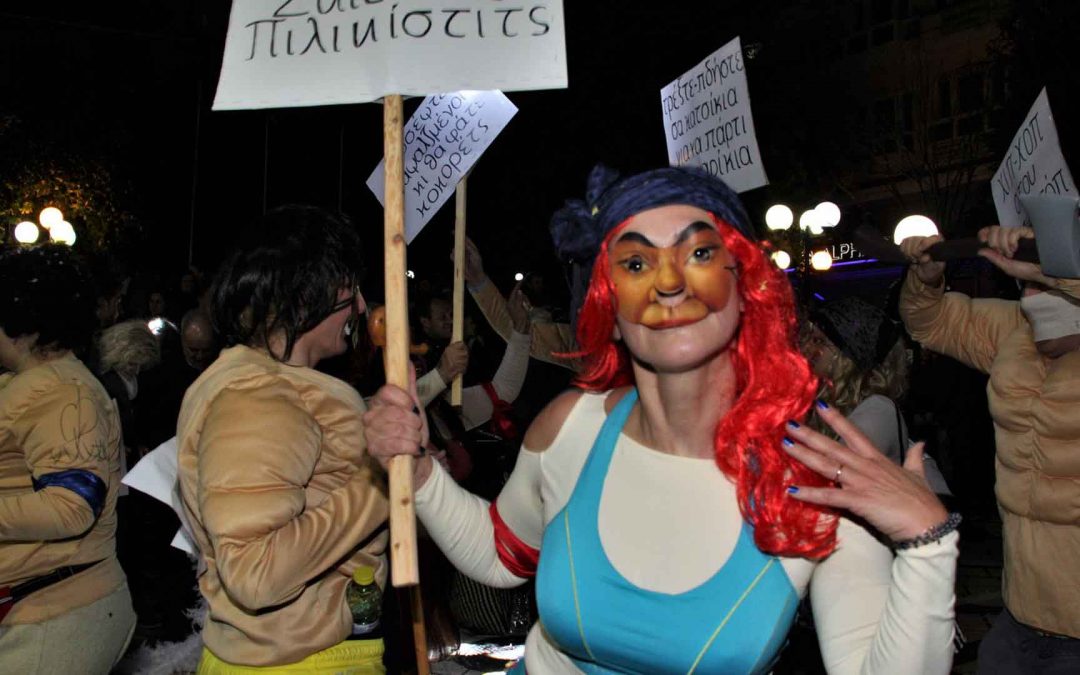Apeiros Gh – Celebrations for the release of Arta
The big events for the anniversary of release of Arta take place around the end of June. Various intellectual and cultural events are happening, like the conservatoire of city realise representations in the “kastraki” and also many other musical and theatrical representations.
Celebration in the honor of Saint Theodora of Arta
On 11 March, it is the big celebration day in the honor of Saint Theodora, who is precious for the city. On the occasion this big religious feast, people go with the picture and the relic of Saint all around the city. In these ethics a parade is also taking place in which all schools of Arta, the army and other cultural associations participate, too.
The woman’s Carnival day
During the Carnival period, between the first and the second celebration week, is that Wednesday when the Carnival Women Day takes place in Arta. That day is it known for its big carnival parade, ethics that are still on from the Venetian’s possession of city. This is a fascinating event which visitors should not to miss.
Traditional Bazaar
On the 27 of September a big bazaar takes place for one week, a delivery that is maintained for years, from the season of Ottoman domination. The event is held in specifically shaped exhibition space. The ceremony of the bazaar beginning starts with a really festive way and also with a ceremony of inauguration from the Despot, then the fireworks lit up the whole city.
Feast of Chestnut and Raki
The feast of Chestnut and Raki was established in 2009 amining at the appointment of local products, local people and visitors gathering and entertainment. Rodaygi embraced from automnal colours 2nd, or 3rd Sunday of October, entertains in her square thousands of people, that have the chance to enjoy roasted and boiled chestnuts, abundant pure raki emanating from the grape “Zampela” (it received his name from the queen Izampela) as well as pancakes that are prepared on the spot by the women of Rodaygi village.
More ethics in Arta
- Fire lighting in Ag. Theodora on Maundy Thursday. Residents of the area next to Agia Theodora light a big fire at the churchyard on Maundy Thursday evening. This costume symbolized the firs lit by Jesus’ students the night when He was arrested.
- Lazaroudia: On Lazarus Saturday, groups of young children walk around the city and sing the carols of Lazarus. The preparation begins in the same morning or even from the previous evening. Children being helped by their mothers embellish their wicker baskets with flowers. Afterwards the go out in the streets and visit houses where people offer them eggs, dainties, candies and money.
- Breaking the Botia on Holy Saturday. On Holy Saturday morning, just when the church bells signal the first Resurrection people in the centre of Arta break earthenware pots, known as “limpes” or “botia”.
- Burning Judas. On Resurrection night, at the yard of the illuminated Church of Parigoritissa at the sound of the Resurrection Troparion, Judas is burnt.
- The lit kermes oak: During the holiday period, in many villages of Arta, there is the following custom: when someone walks to visit their beloved people they hold a kermes oak branch which they light while in the street. This habit symbolizes the shepherds who, in the night when Jesus was born, set off to worship the Holy Infant and in order to enlighten their way they cut kermes oak branches and lit them.
- The custom of Barbarousa: In Peta village, during the summer months that it barely rained and the crops were in danger of being destroyed, people had a habit in order to bring the rain. A man from the village would get dressed in matting, fern, myrtles etc. Then he was tied up with a rope and wandered around the neighborhoods of the village. The rest villagers would follow him with jugs filled with water which they would finally pour on him. The water they used to pour on “Barbarousa” (this is how they called the person in disguise) symbolized the water of the rain which would water the trees and the cultivations. Some people would throw coins instead of water and “Barbarousa” would jump in order to get them.
- Lechnico or Lochniko: When a woman would give birth to a child and within 40 days from that, the relatives and the neighbors would visit her, (“Lechona”: woman who has recently given birth to a child), in order to see the baby, to give wishes and cross its palm with silver (most of the times it was a coin instead) and offer the “lechona” some food that would usually be a rooster.

